Luggala Lodge was built in 1787 and Gothicized thereafter for the La Touche family (Dublin bankers of Huguenot origin). In 1937, Ernest Guinness bought Luggala and gave it as a wedding present to his daughter, Oonagh Guinness, on her marriage to Lord Oranmore and Browne. Oonagh quickly made the place party central. She “imbued Luggala with enchantment” and made it “the most decorative honey pot in Ireland”, as an obituary observed on her death, at 85, in 1995.
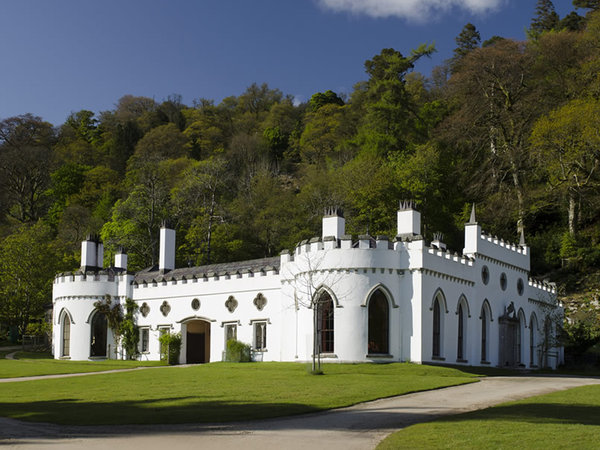
The main house, Luggala Lodge, is picturesquely situated at the head of Lough Tay. The precipitous drive, surrounded by a dramatic wild landscape, gives no hint of what lies within this enchanted valley.
Nobody could stay away; literati. painters, actors, scholars, hangers-on, toffs, punters, poets, and social hang-gliders. Luggala famously became the gathering place for Dublin’s intelligentsia, as well as artists and musicians from around the world.
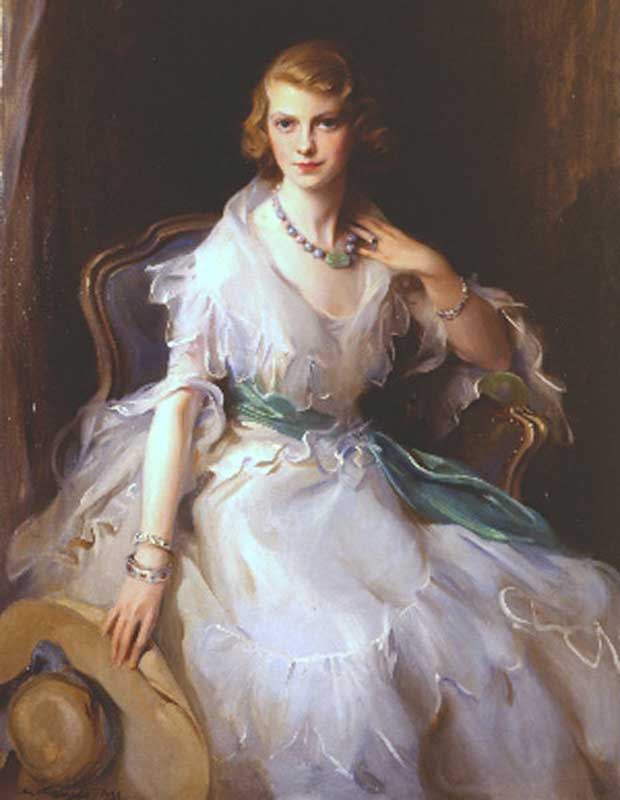 Portrait of Oonagh Guinness by Philip de László, 1931
Portrait of Oonagh Guinness by Philip de László, 1931
In the late 1960s, Oonagh passed the estate to her son, the Hon Garech Browne, who did not only maintained but surpassed his mother’s gifts both for hospitality and for bringing together a wide range of creative talents. He made Luggala a magical place, full of musicians, artists, poets” – a stellar cast, including Heaney, Brendan Behan, Anthony Cronin and the great artists Lucian Freud and Francis Bacon.
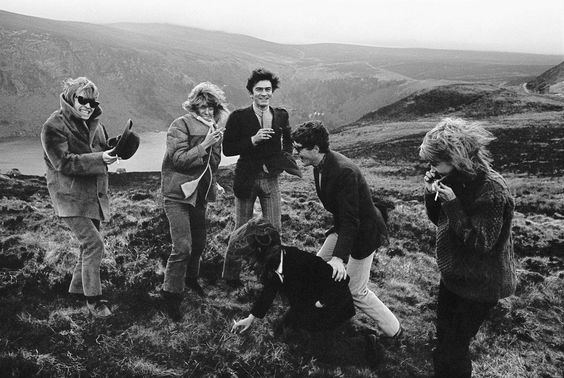 Tara Browne’s (Garech’s younger brother) 21st birthday was one of the most iconic parties at Luggala. In the picture, Brian Jones, Nicki Browne, Anita Pallenberg and other guests stand in front of Lough Tay on the day of Tara’s Birthday. The party, attended by the likes of Mick Jagger and Jean Paul Getty, kicked off in Dublin Airport with a leased Caravelle passenger jet. As Christopher Gibbs remembered ‘All sorts of people got off that plane. I just remember this mass of androgynous youth moving towards the terminal building. There was a group of bohemian types there… and they were carrying bottles of Guinness, which I thought was odd, bringing Guinness to a party hosted by the Guinness family. And they said it wasn’t for drinking, it was for washing their hair. It was that kind of weekend.” Tara’s favourite band, Lovin Spoonful, was flown from America to entertain the youthful guests. (you can find more info about the party in ‘A Nervy Girls Guide’ Blog)
Tara Browne’s (Garech’s younger brother) 21st birthday was one of the most iconic parties at Luggala. In the picture, Brian Jones, Nicki Browne, Anita Pallenberg and other guests stand in front of Lough Tay on the day of Tara’s Birthday. The party, attended by the likes of Mick Jagger and Jean Paul Getty, kicked off in Dublin Airport with a leased Caravelle passenger jet. As Christopher Gibbs remembered ‘All sorts of people got off that plane. I just remember this mass of androgynous youth moving towards the terminal building. There was a group of bohemian types there… and they were carrying bottles of Guinness, which I thought was odd, bringing Guinness to a party hosted by the Guinness family. And they said it wasn’t for drinking, it was for washing their hair. It was that kind of weekend.” Tara’s favourite band, Lovin Spoonful, was flown from America to entertain the youthful guests. (you can find more info about the party in ‘A Nervy Girls Guide’ Blog)
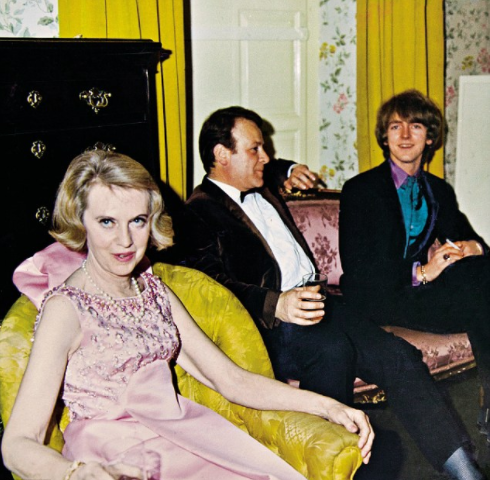
Oonagh Guinness, Derek Hart of the BBC and Tara Browne at Luggala on the night of Tara’s 21st Birthday in March 1966 Before the end of the year, Tara was dead, killed in a car crash in London.
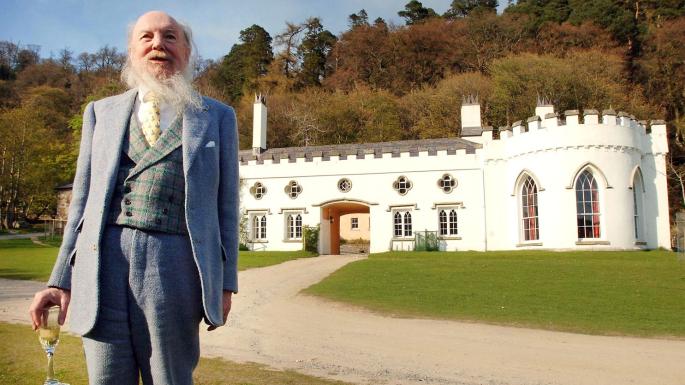 Garech Browne in front of Luggala in 2006. Rex Features.
Garech Browne in front of Luggala in 2006. Rex Features.
Garech Browne, who passed away last March, was regarded not only as an exceptional host but as a leading proponent for the revival and preservation of traditional Irish music, through his record label Claddagh Records which he founded with others in 1959. He was also known as ‘The last dandy of Ireland’.
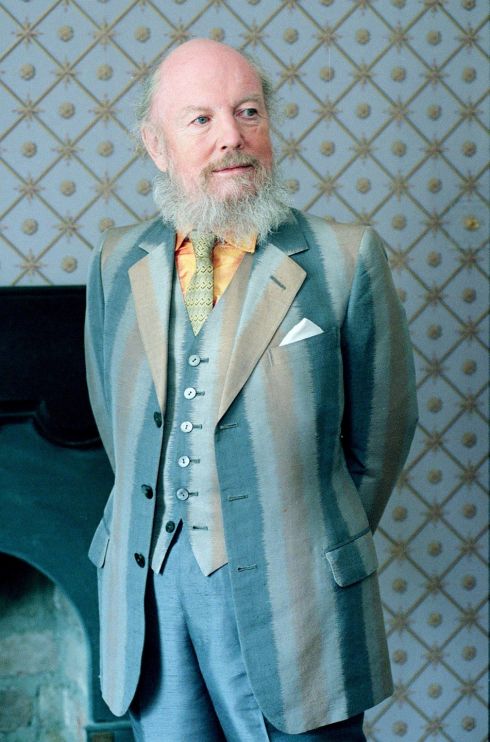
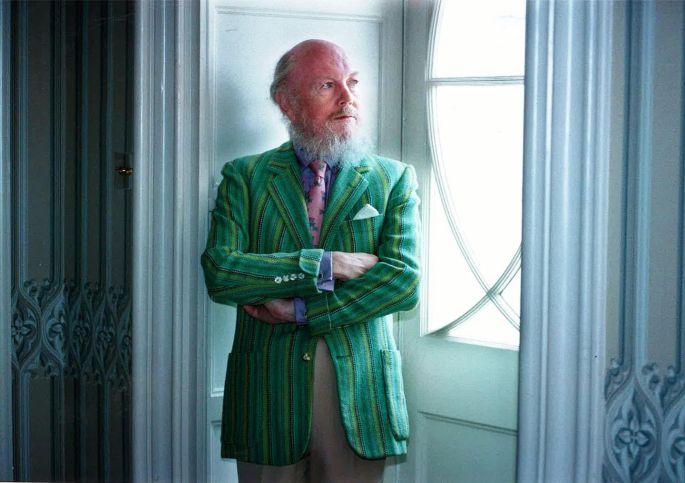 A true eccentric and a fascinating character. Garech Brown photographed at Luggala in 1999. Joe St Leger. THE IRISH TIMES
A true eccentric and a fascinating character. Garech Brown photographed at Luggala in 1999. Joe St Leger. THE IRISH TIMES
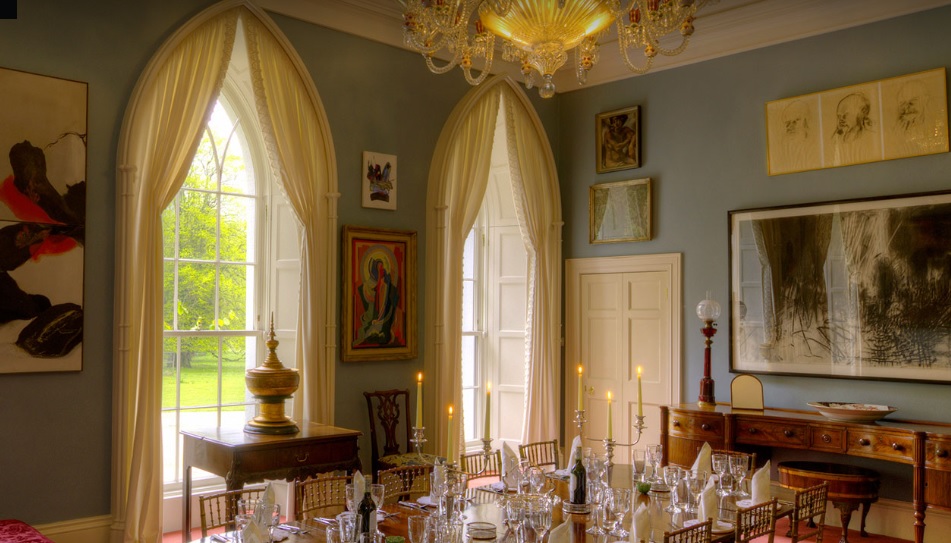
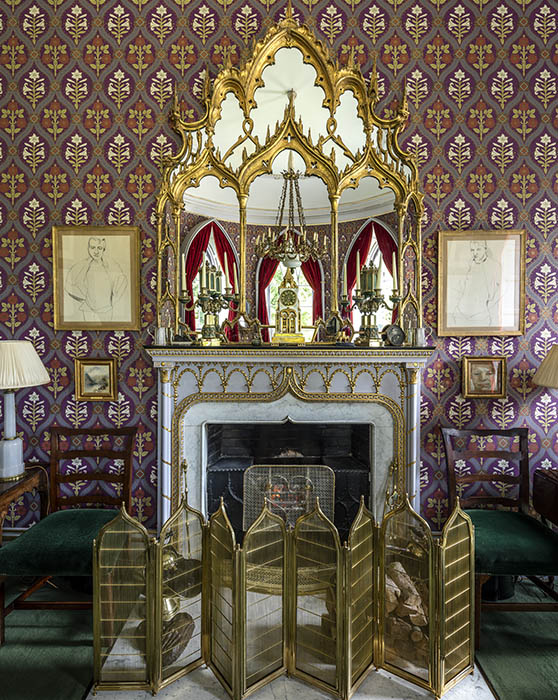 Simon Watson
Simon Watson
Mr Browne restored the house to its original castle-like look in 1996 with the help of Irish conservation specialists Sheehan & Barry Architects on a multimillion-dollar refurbishment of the seven-bedroom Gothic Revival main lodge. In 2000 the house was thoroughly redecorated, albeit in a style that recalled its previous incarnation. For this assignment, Garech called on the services of two friends who knew Luggala well and were sympathetic to its distinctive character: David Mlinaric and Angela Douglas.
They conceived a plan to restore the house architecturally to its appearance c 1810, yet keep some elements of the Fifties interior decoration, which had their own charm. As Browne put it, “David decided it should look quite different, but exactly the same.”
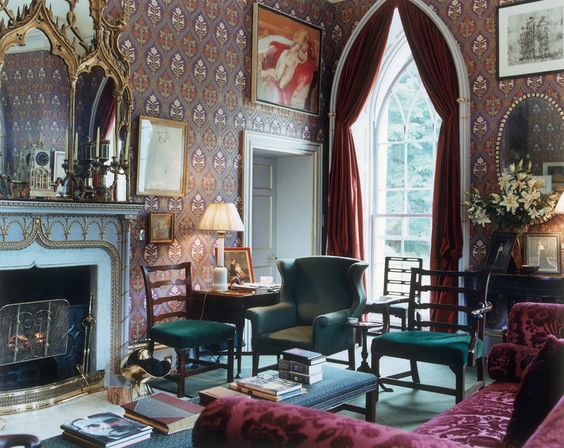
Textiles, particularly the house’s original wallcoverings, were a special concern. Pugin had designed the paper for the drawing room, Gothic Lily, which was also used in the Houses of Parliament; Mlinaric commissioned John Perry Papers of London to reproduce the paper from the original blocks, which they still had. It’s a great backdrop to Browne’s collection of 19th and 20th-century paintings – notably by Francis Bacon and Lucian Freud, including a portrait of Browne by the latter. Freud, who was once married to his cousin, Lady Caroline, was a frequent guest in the old days, and a mentor of sorts to Browne.
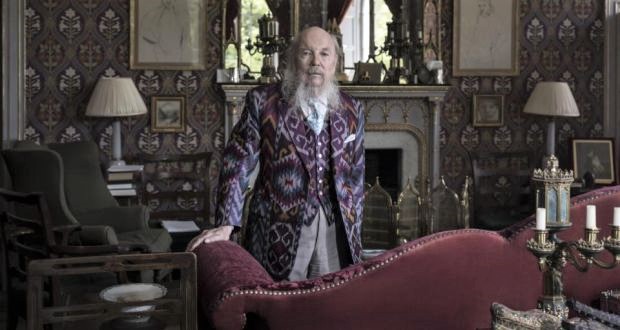 Mr Browne in the drawing room. Pugin’s Gothic Lily wallpaper in the walls. Kim Haughton.
Mr Browne in the drawing room. Pugin’s Gothic Lily wallpaper in the walls. Kim Haughton.
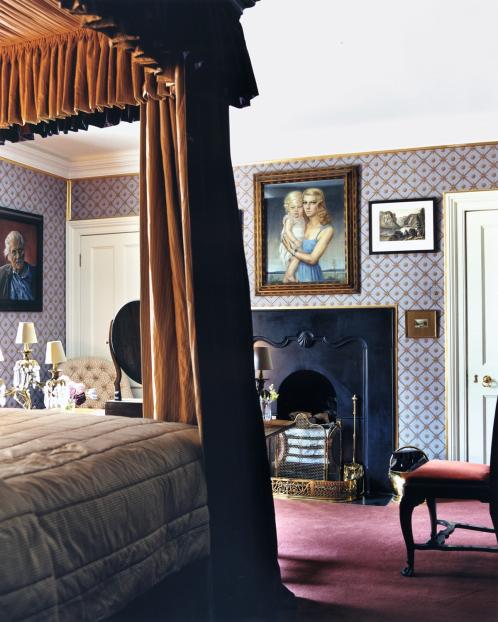
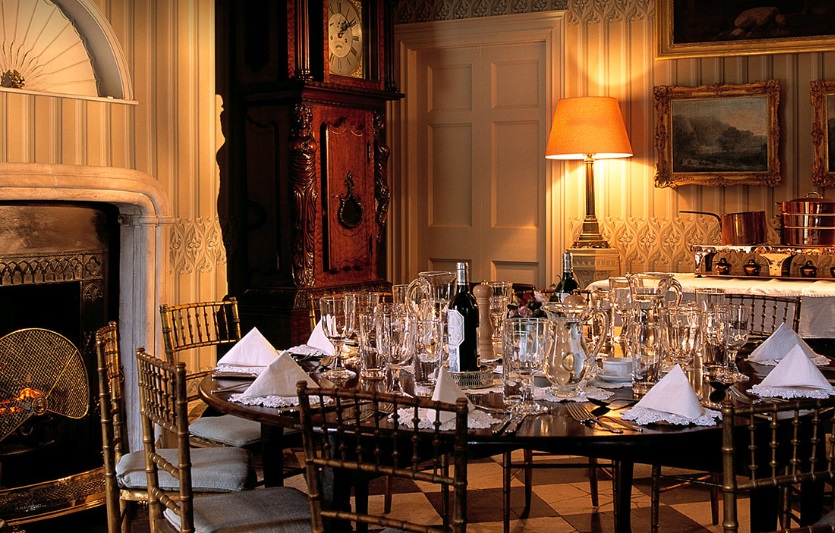
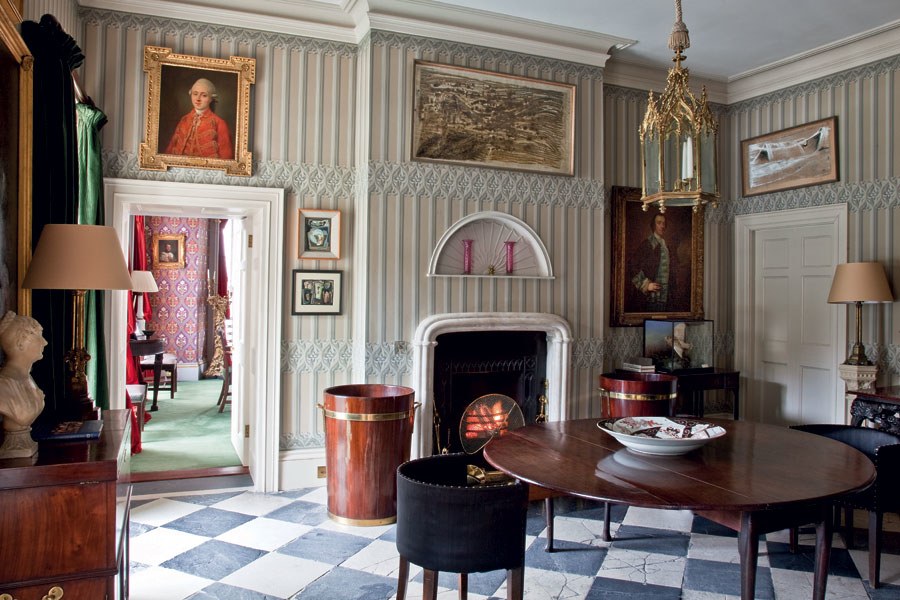 A handmade Gothic-style wallpaper by David Skinner lines Luggala’s entrance hall, which also served as a dining room on occasion. James Fennell.
A handmade Gothic-style wallpaper by David Skinner lines Luggala’s entrance hall, which also served as a dining room on occasion. James Fennell.
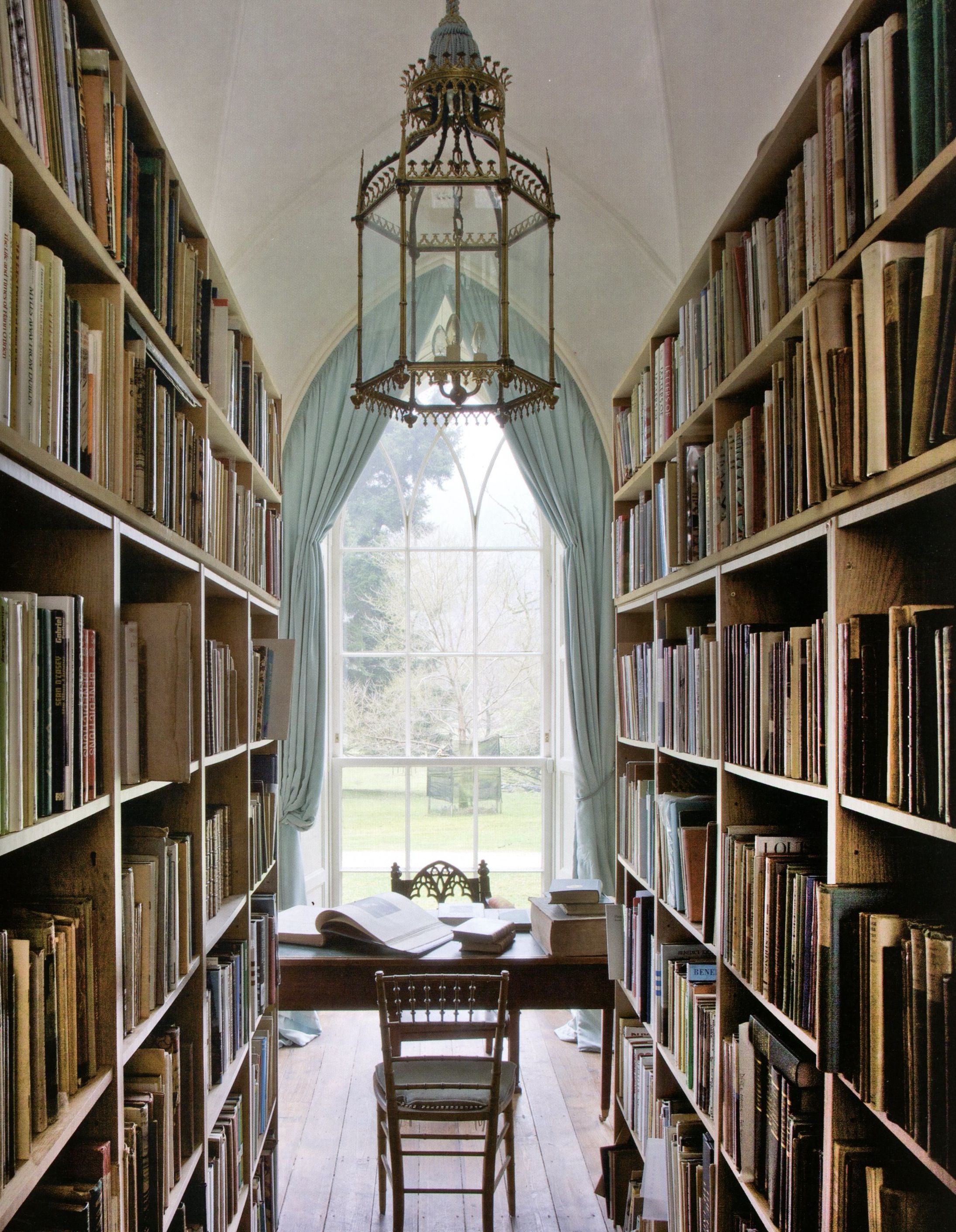
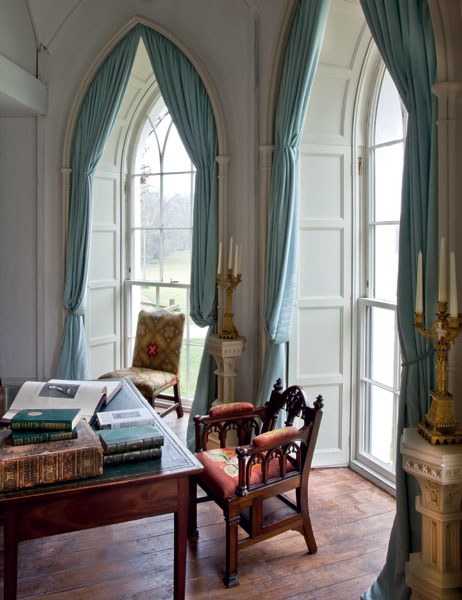
The creation of a new library was part of the extensive restoration of Luggala in the 1990s by Dublin architecture firm Sheehan & Barry and interior designers David Mlinaric and Amanda Douglas. At the desk is a Gothic Revival armchair, and the lancet windows are curtained with custom-made watered poplin. James Fennell.
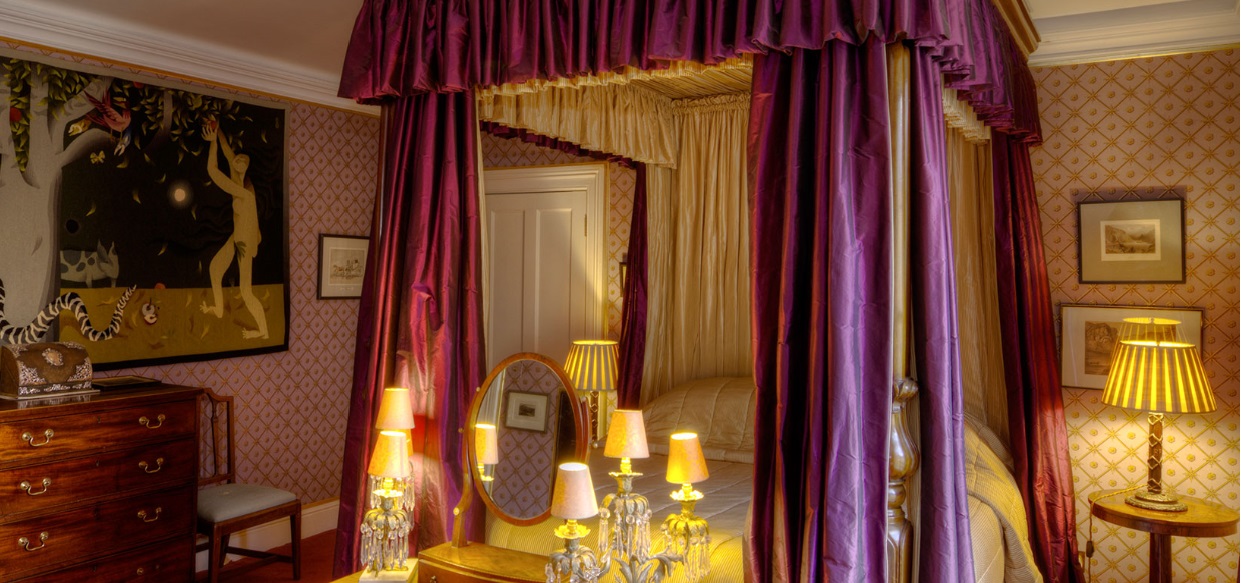
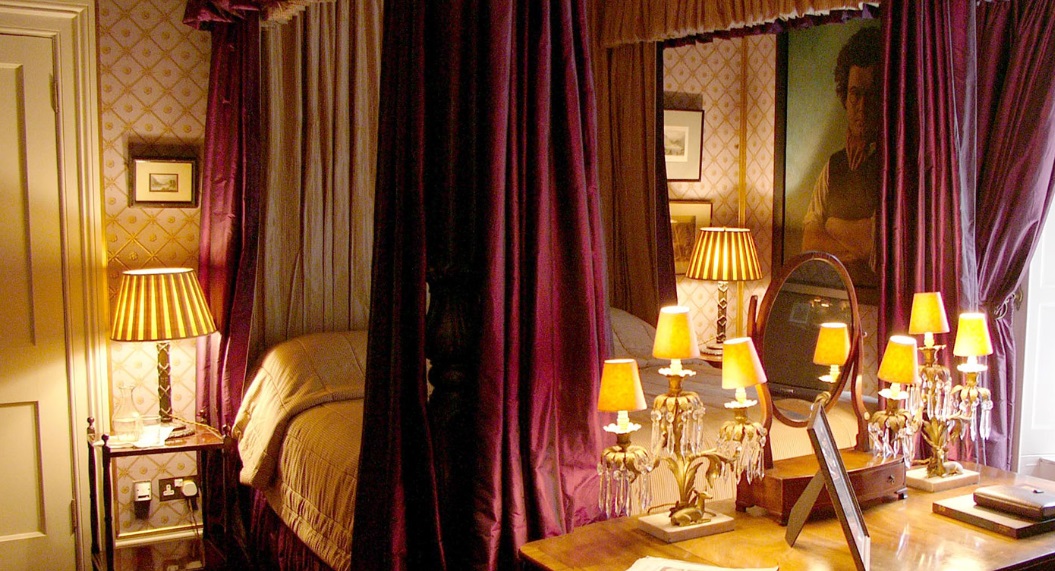
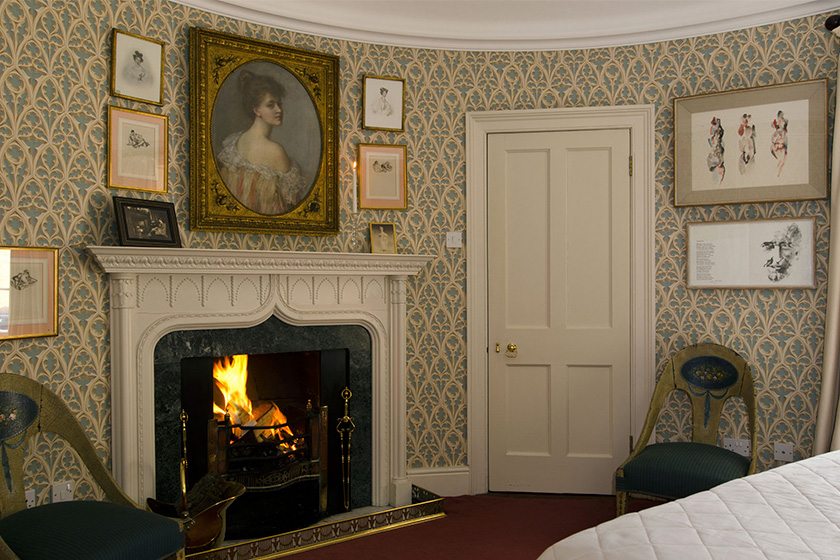
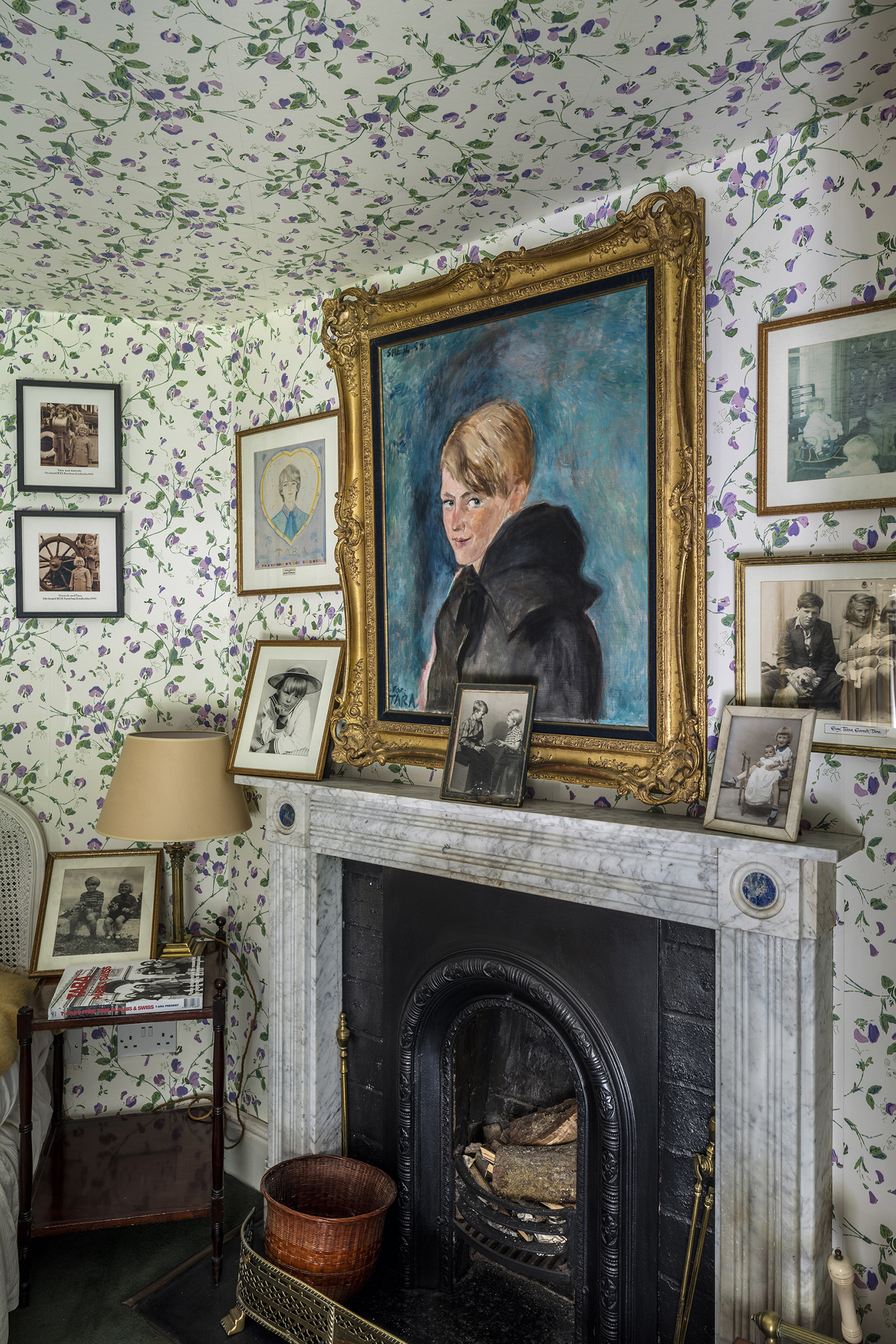
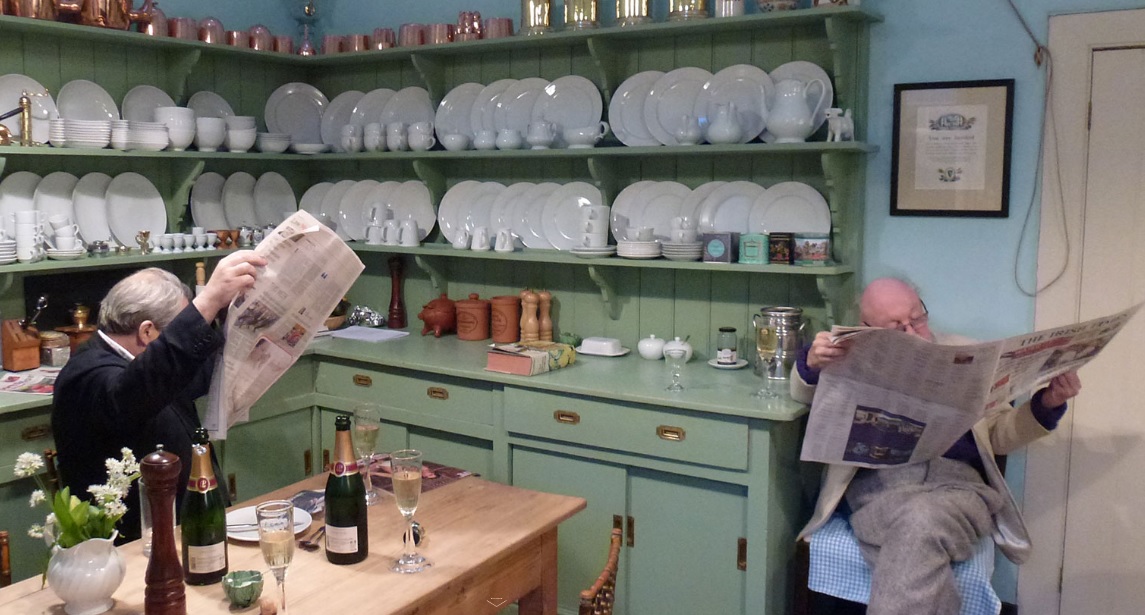
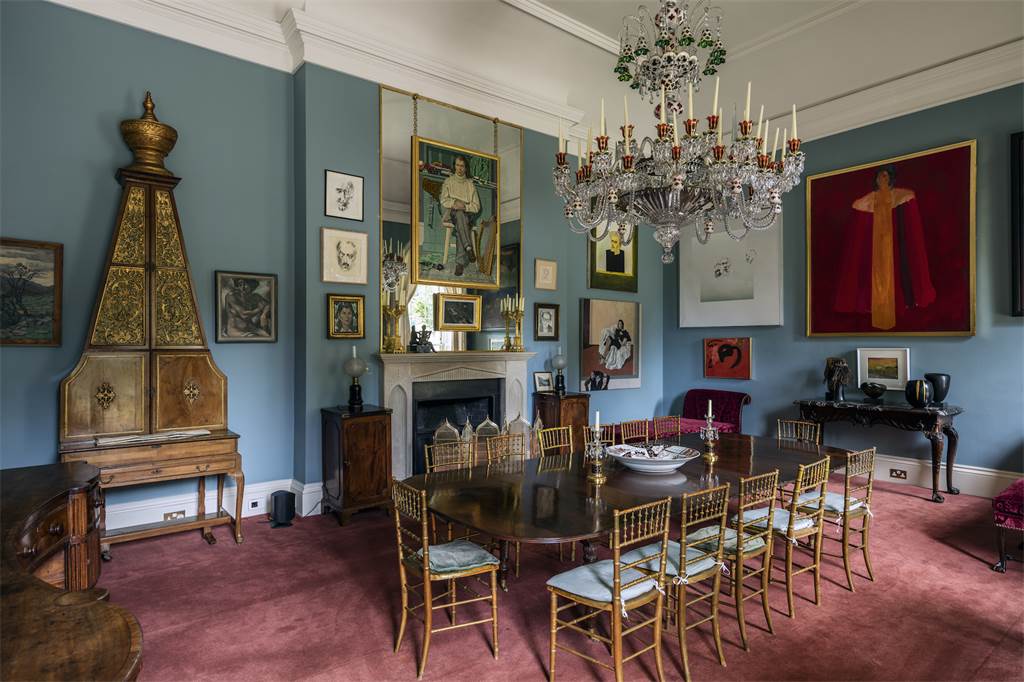
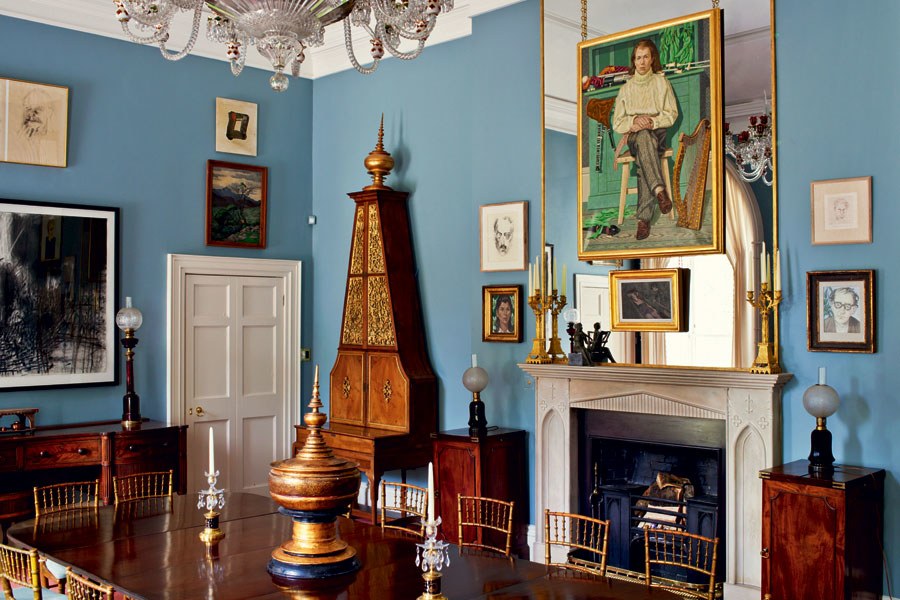
Luggala’s dining room features a rare 1764 upright harpsichord made by Ferdinand Weber (to the right of the door). Above the mantel is a 1968 Edward McGuire portrait of Hon. Garech Browne.
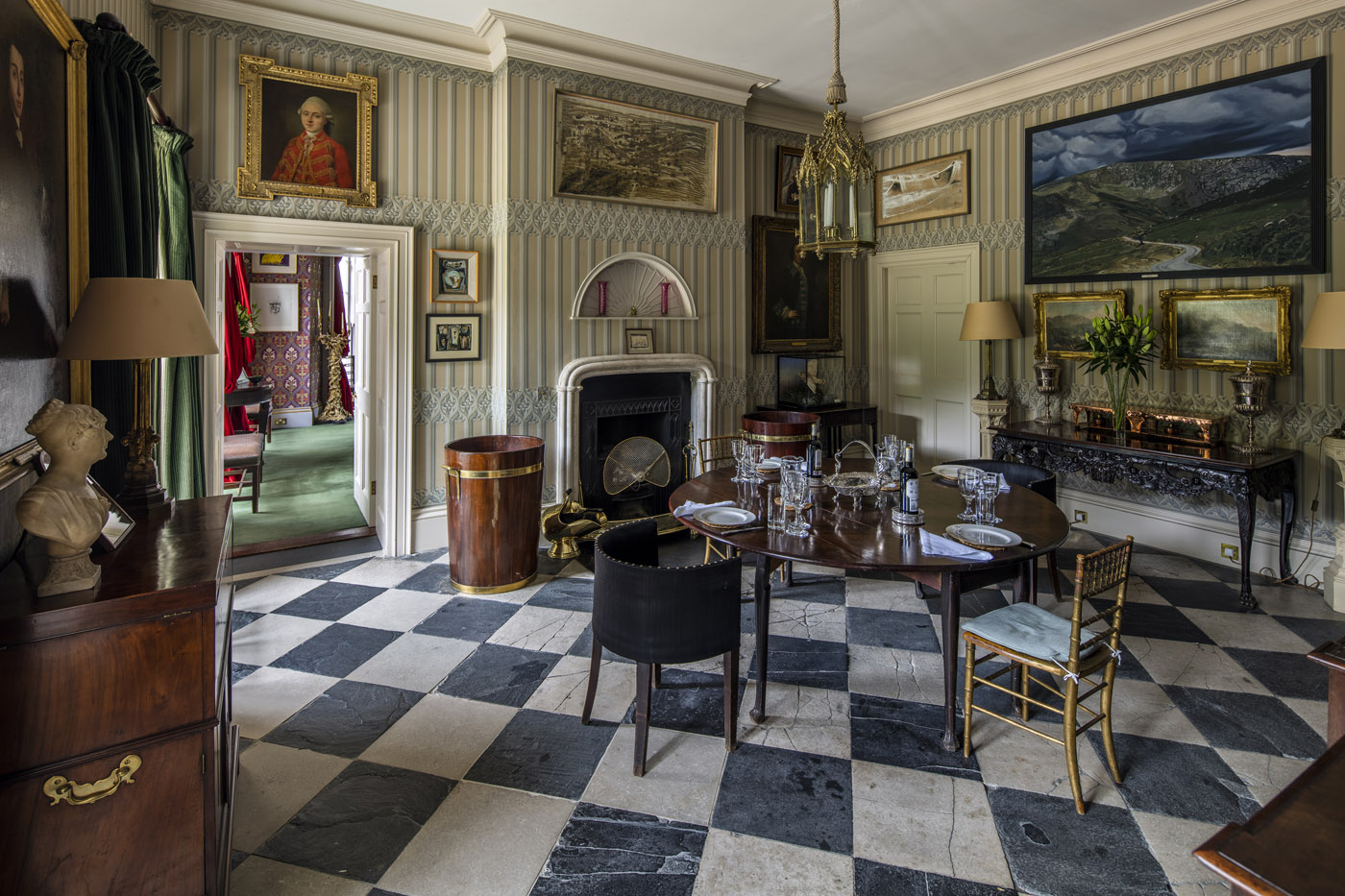
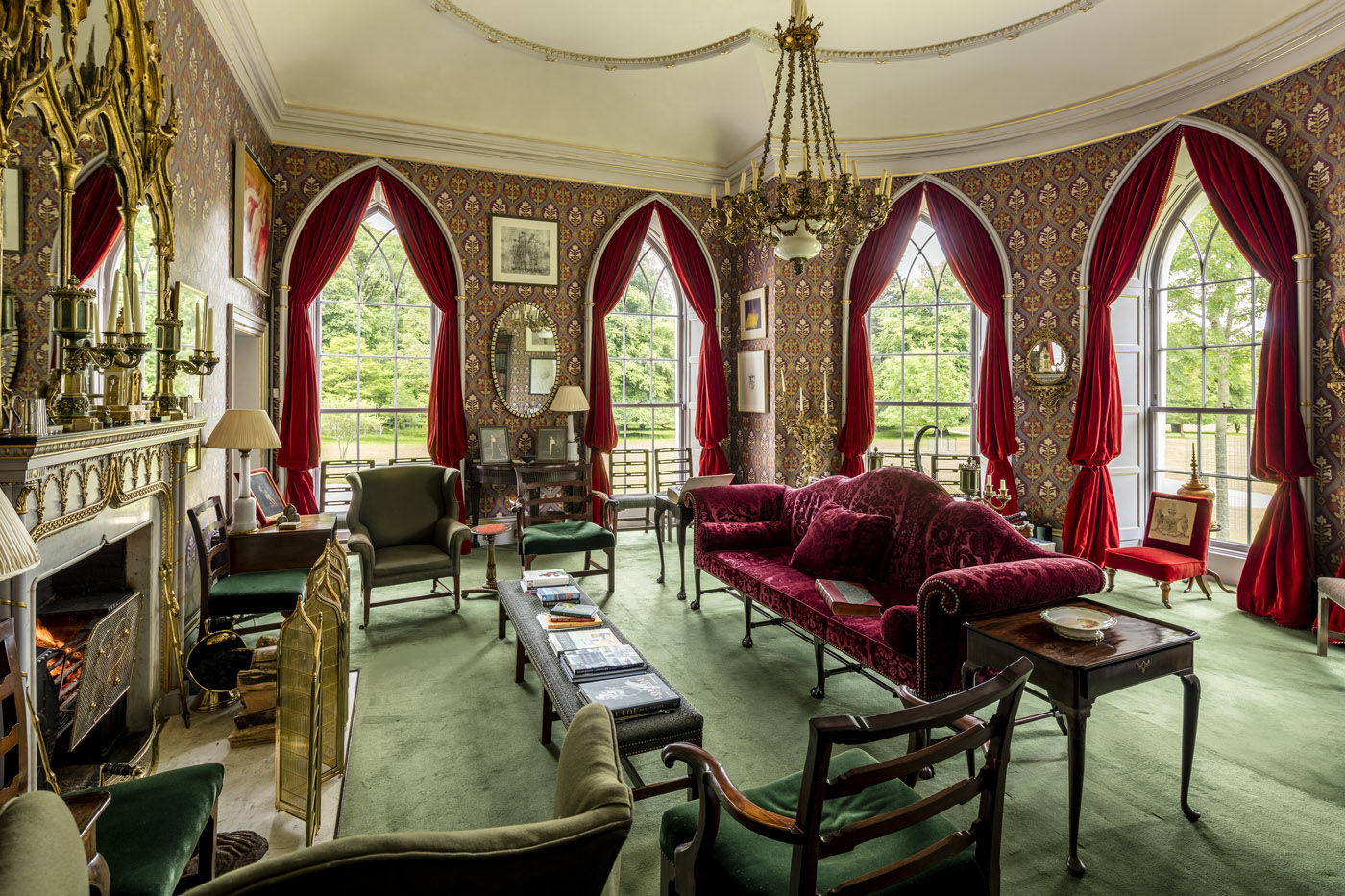
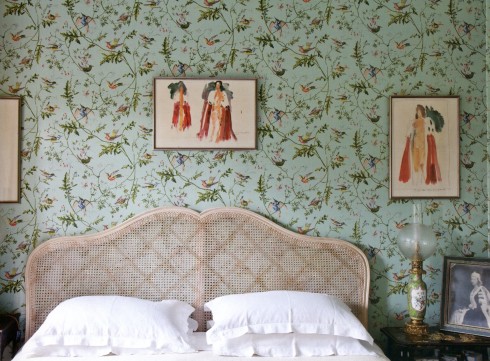
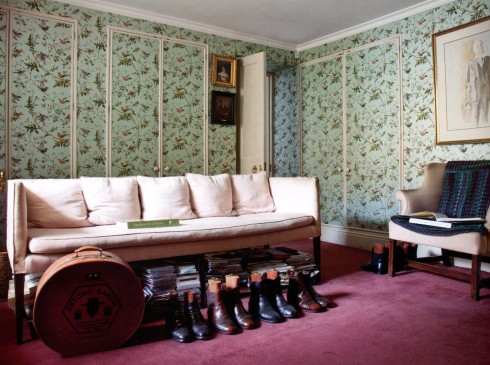
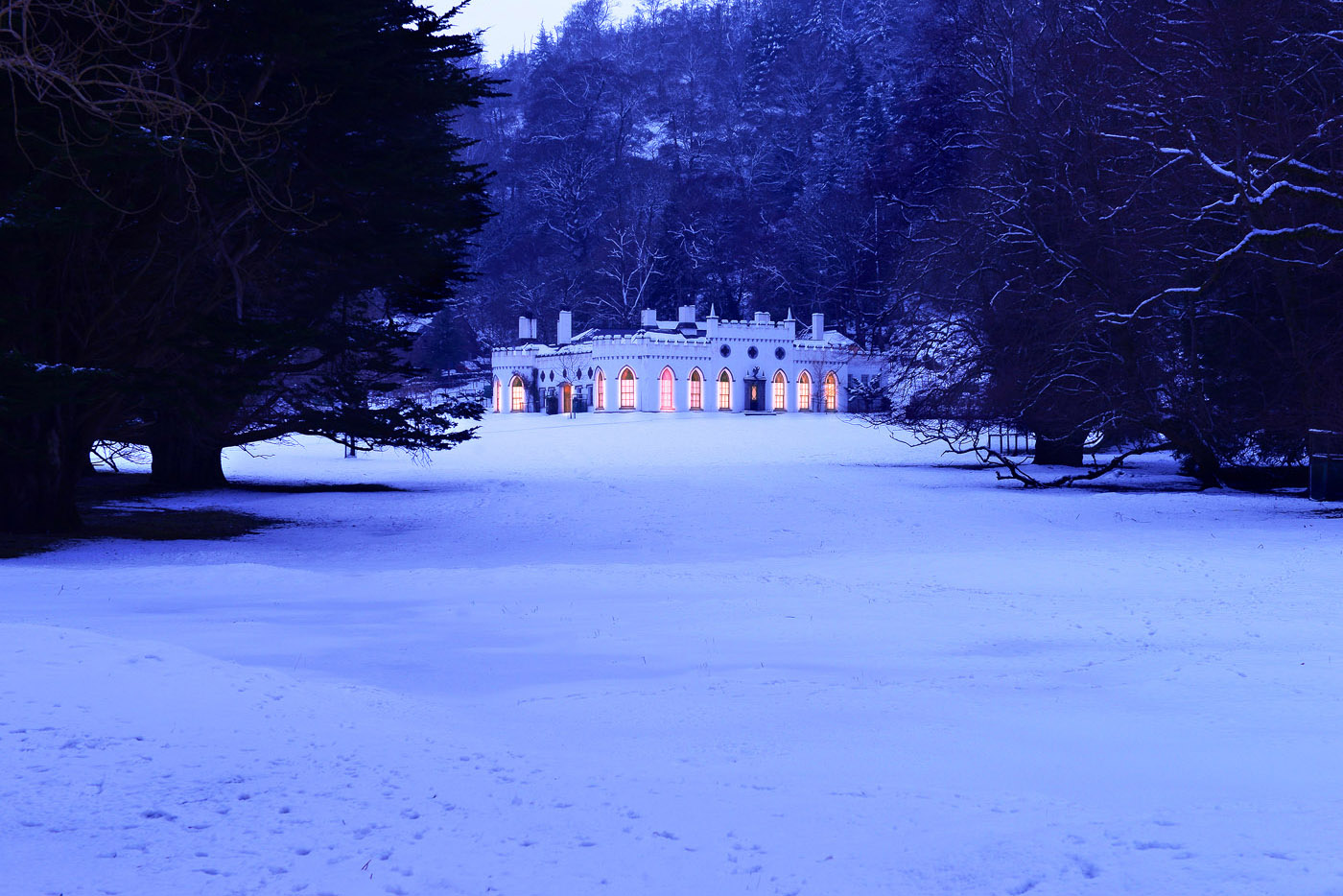
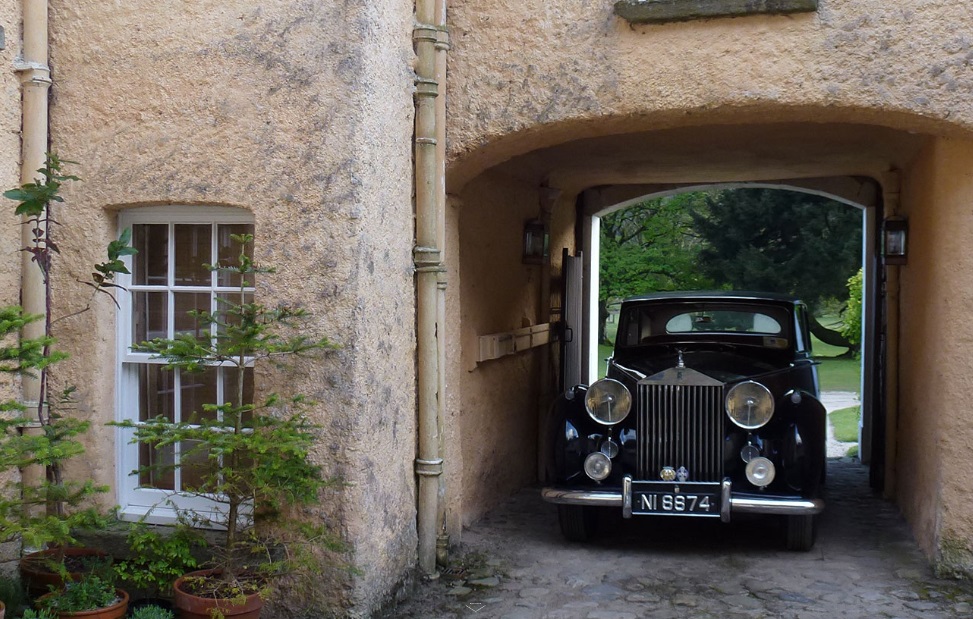
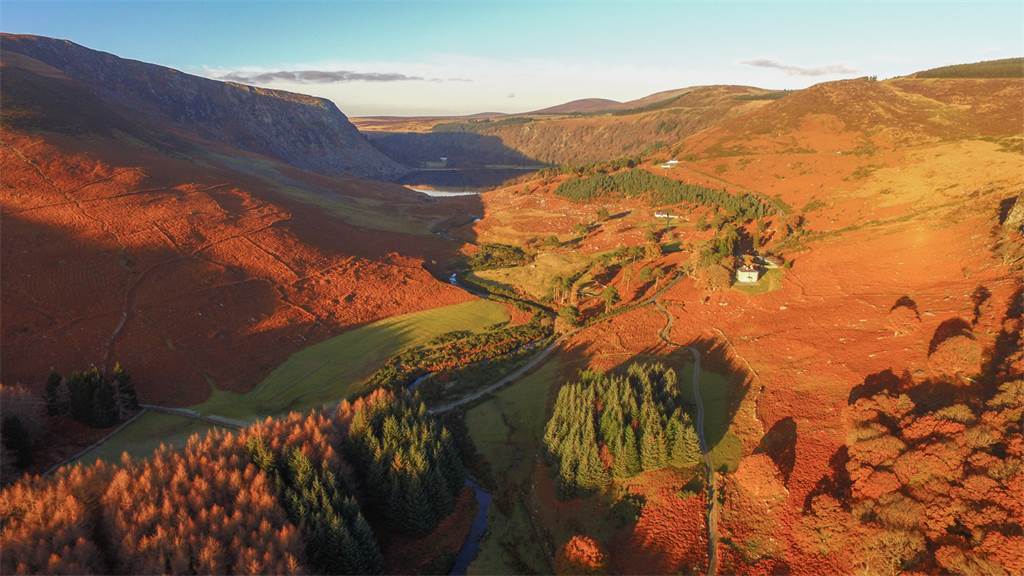
In 2012 Hon Garech Browne gave his blessing to the book, Luggala Days, by Robert O’Byrne, which celebrates the extraordinary memories of fabulous wealth and eccentricity associated with Luggala. I highly recommend this book to anyone interested in this fascinating place. O’Byrne is also the author of one of my favourite blogs ‘The Irish Aestethe‘
The 5000-acre estate is now for sale with a €28m price tag. Let’s hope the next owners keep it intact and maintain the joyous and welcoming spirit of this wonderful estate.

